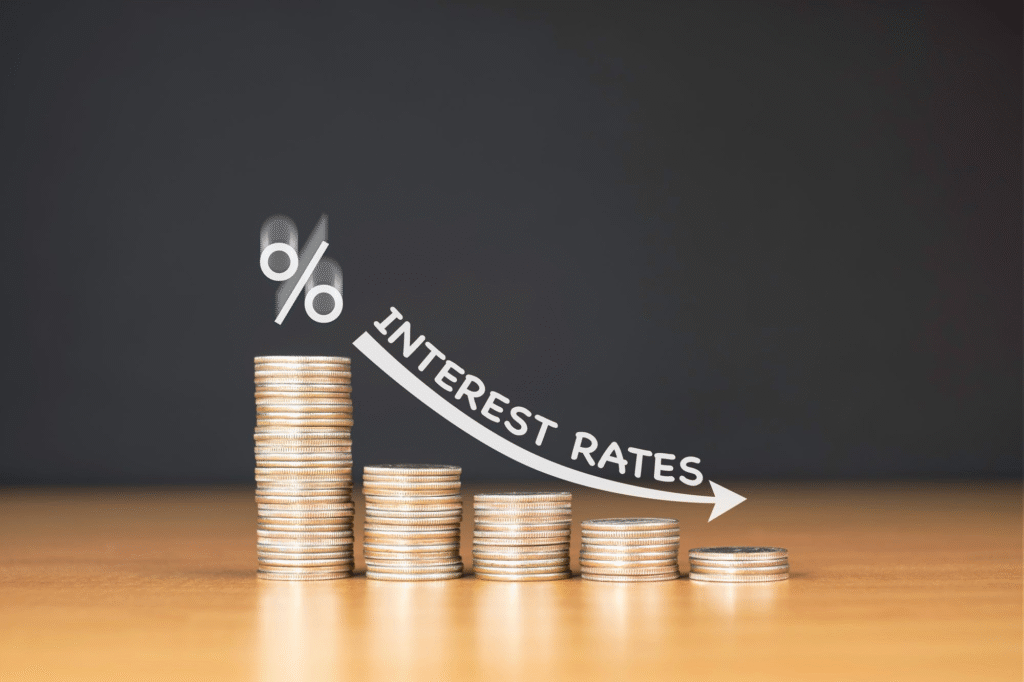Finding a loan with a low interest rate is a goal shared by millions of borrowers worldwide. Whether you’re planning to consolidate debt, finance a home renovation, pay for education, or cover an emergency expense, securing a low interest loan can save you thousands of dollars in interest payments and make repayment more manageable.
In 2025, the lending landscape has evolved significantly due to technological advancements, changing economic conditions, and increasing competition among lenders. This article will guide you through the essential steps and strategies to find the best low interest loan tailored to your needs. We’ll explore the types of low interest loans available, key factors that influence rates, how to improve your chances of qualifying, and much more.
Key Takeaways
- Check and improve your credit score before applying.
- Shop around and compare multiple lenders to find competitive rates.
- Consider secured loans if you want the lowest possible interest rates.
- Use pre-qualification tools to get personalized rate estimates without credit impact.
- Negotiate fees and terms with lenders to get the best deal.
- Read the loan agreement carefully to understand all costs and obligations.
- Choose a loan term that balances monthly payments with total interest paid.
Understanding Low Interest Loans

Before diving into the process of finding the best low interest loan, it’s important to understand what makes a loan “low interest” and why that matters.
What Is a Low Interest Loan?
A low interest loan is a loan offered at an interest rate that is below the average or market rate for similar loans. Interest is the cost you pay to borrow money, expressed as a percentage of the loan amount (the principal). Lower interest rates mean lower borrowing costs.
For example, if the average personal loan interest rate is 12%, a loan offered at 6% would be considered a low interest loan.
Why Do Interest Rates Vary?
Interest rates are a crucial component of any loan because they determine the cost of borrowing. However, you might notice that interest rates differ widely between lenders, loan types, and even borrowers. Understanding why interest rates vary can help you make smarter borrowing decisions and increase your chances of securing a low interest loan in 2025.
1. Creditworthiness of the Borrower
One of the biggest factors influencing interest rates is the borrower’s creditworthiness, which lenders evaluate primarily through credit scores and credit history.
- Credit Score: This numerical score, typically ranging from 300 to 850, reflects how reliably you have repaid debts in the past. Higher scores indicate lower risk, so lenders offer better rates to those with strong credit.
- Credit History: Beyond the score, lenders look at the length of your credit history, types of credit used, recent credit inquiries, and any late payments or defaults. A clean and long-standing credit record usually translates to lower rates.
2. Type of Loan
Different loans carry different risks and therefore different interest rates:
- Secured vs. Unsecured Loans: Secured loans, like mortgages and auto loans, use collateral (your home or car) to reduce lender risk, so they typically have lower interest rates. Unsecured loans, such as personal loans or credit cards, lack collateral and often have higher rates.
- Loan Purpose: Loans for specific purposes like education or business may have distinct interest rates depending on risk and government backing.
- Loan Term: Short-term loans usually have lower rates than long-term loans because lenders face less risk over shorter periods.
3. Economic and Market Conditions
Interest rates fluctuate based on broader economic factors:
- Central Bank Policies: Central banks, like the Federal Reserve in the U.S., set benchmark rates (like the federal funds rate) that influence lending rates across the economy. When central banks raise rates to control inflation, borrowing costs typically increase.
- Inflation: Higher inflation often leads to higher interest rates because lenders want to maintain their real returns.
- Supply and Demand for Credit: If more borrowers are seeking loans than lenders have funds available, rates tend to rise. Conversely, abundant capital can drive rates down.
- Market Competition: Increased competition among lenders can lead to lower interest rates as institutions vie for customers.
4. Loan Amount and Repayment Terms
- Loan Amount: Larger loans may have lower interest rates because lenders can earn more in total interest. However, extremely high loan amounts might be seen as riskier and could carry higher rates.
- Repayment Terms: Loans with shorter repayment periods typically have lower interest rates than those stretched over many years because lenders recover their money faster and face less risk.
5. Borrower’s Income and Debt-to-Income Ratio (DTI)
Lenders assess your ability to repay based on your income relative to your existing debts:
- Higher Income: A steady and high income increases your ability to repay, reducing lender risk and resulting in lower rates.
- Debt-to-Income Ratio: A lower DTI means you have more disposable income to manage new debt, which can qualify you for better rates.
6. Loan Fees and Additional Costs
Sometimes, loans with seemingly low interest rates include high fees (origination fees, closing costs, etc.), which effectively increase the cost of borrowing. When lenders price these fees differently, the effective interest rate (APR) can vary, making direct rate comparisons challenging without considering total costs.
7. Lender’s Risk Appetite and Policies
Every lender has a unique risk profile and lending criteria based on their business model, capital availability, and target market:
- Traditional Banks: Often stricter, offering lower rates to prime borrowers.
- Credit Unions: Generally provide competitive rates as nonprofit entities focused on member benefits.
- Online Lenders and Fintech: May offer varied rates based on alternative data and innovative underwriting techniques.
8. Government Regulations and Incentives
Governments sometimes regulate or incentivize lending to certain groups or sectors:
- Subsidized Loans: Government-backed loans (e.g., FHA loans, student loans) often come with lower rates.
- Regulatory Changes: Changes in laws regarding interest rate caps or lending practices can affect the rates lenders charge.
Types of Low Interest Loans in 2025
1. Personal Loans
Unsecured loans that can be used for many purposes. Online lenders and credit unions often offer competitive rates, especially to borrowers with good credit.
2. Home Equity Loans and Lines of Credit (HELOCs)
Loans secured by your home’s equity typically have very low interest rates compared to unsecured personal loans. They are ideal for home improvements or large expenses but carry the risk of foreclosure if you default.
3. Auto Loans
Auto loans for new and used cars generally have lower rates than unsecured loans due to the vehicle serving as collateral.
4. Student Loans
Federal student loans have fixed, low interest rates. Private student loans can vary but may offer competitive rates to borrowers with strong credit.
5. Mortgage Loans
Mortgage rates tend to be some of the lowest you can find, especially with government-backed programs. Shopping around is key.
6. Small Business Loans
Government and nonprofit-backed loans often provide low interest rates to qualified small business owners.
How to Find the Best Low Interest Loan in 2025
1. Check Your Credit Score and Credit Report
Your credit score is the single most important factor lenders consider. Higher credit scores translate to lower risk for lenders and, therefore, better interest rates for you.
- Action Step: Obtain your free credit reports from the three major bureaus (Equifax, Experian, and TransUnion) and dispute any errors.
- Tip: Work on improving your credit by paying down debt, making on-time payments, and avoiding new debt before applying.
2. Compare Multiple Lenders
Interest rates vary widely between lenders. Shop around and compare:
- Banks
- Credit unions
- Online lenders
- Peer-to-peer lending platforms
Online comparison tools can simplify this process and help you get pre-qualified offers without hurting your credit score.
3. Understand Loan Terms Beyond Interest Rate
A low interest rate is attractive, but also consider:
- Loan fees (origination fees, prepayment penalties)
- Loan term length
- Monthly payment amounts
- Flexibility in repayment
Sometimes a slightly higher interest rate with fewer fees or more favorable terms can be better overall.
4. Consider Secured Loans for Lower Rates
If you own a home or other valuable asset, consider secured loans like home equity loans or auto title loans, which typically offer lower rates than unsecured personal loans.
5. Use Pre-Qualification Tools
Many lenders offer pre-qualification that doesn’t impact your credit score and provides personalized rate estimates.
6. Negotiate With Lenders
Don’t hesitate to ask lenders if they can match or beat competitor offers or waive certain fees, especially if you have strong credit.
7. Prepare and Submit Complete Documentation
Submitting complete and accurate documents upfront—such as income proof, tax returns, and identification—helps speed up approval and may improve your loan offer.
Factors That Affect Your Interest Rate

- Credit Score and History: Higher scores get better rates.
- Income and Employment: Stable income reassures lenders of your ability to repay.
- Debt-to-Income Ratio: Lower ratios improve loan terms.
- Loan Amount and Term: Larger loans or longer terms can affect rates.
- Market Conditions: Rates fluctuate with central bank policies and economic trends.
Tips to Improve Your Chances of Securing a Low Interest Loan
- Pay off credit card balances and reduce overall debt.
- Avoid opening new credit lines before applying.
- Maintain steady employment.
- Build relationships with local credit unions or banks.
- Consider having a co-signer with better credit.
- Apply when interest rates are favorable (keep an eye on market trends).
Also Read :-How Can You Get Quick Loan Approval In 2025?
Conclusion
Finding the best low interest loan in 2025 requires preparation, research, and smart financial habits. By understanding the factors that affect interest rates and actively working to improve your creditworthiness, you can qualify for favorable loan terms that save you money and help you reach your financial goals faster.
Remember, the lowest interest rate is just one part of a loan’s overall value. Always review the full loan terms, fees, and your repayment ability before committing.
FAQs
1. What credit score do I need to get a low interest loan?
Generally, a score above 700 is considered good and may help you qualify for lower rates. Scores above 750 often qualify for the best rates.
2. Are online lenders reliable for low interest loans?
Yes, many online lenders offer competitive rates and faster approval processes. Always research the lender’s reputation and terms.
3. Can I refinance my existing loan to get a lower interest rate?
Yes, refinancing can reduce your interest rate and monthly payments, especially if your credit has improved or market rates have dropped.
4. Do secured loans always have lower interest rates than unsecured loans?
Typically yes, because the collateral reduces the lender’s risk. However, secured loans carry the risk of losing the collateral if you default.
5. How can I negotiate a better interest rate?
Be prepared to show competing offers, highlight your creditworthiness, and ask if fees can be waived or reduced.
6. What are common fees associated with low interest loans?
Origination fees, late payment fees, prepayment penalties, and processing fees are common. Read the loan agreement carefully.
7. Is it better to have a shorter or longer loan term for a low interest loan?
Shorter terms often have lower rates and cost less in interest overall but result in higher monthly payments. Choose a term that fits your budget.


